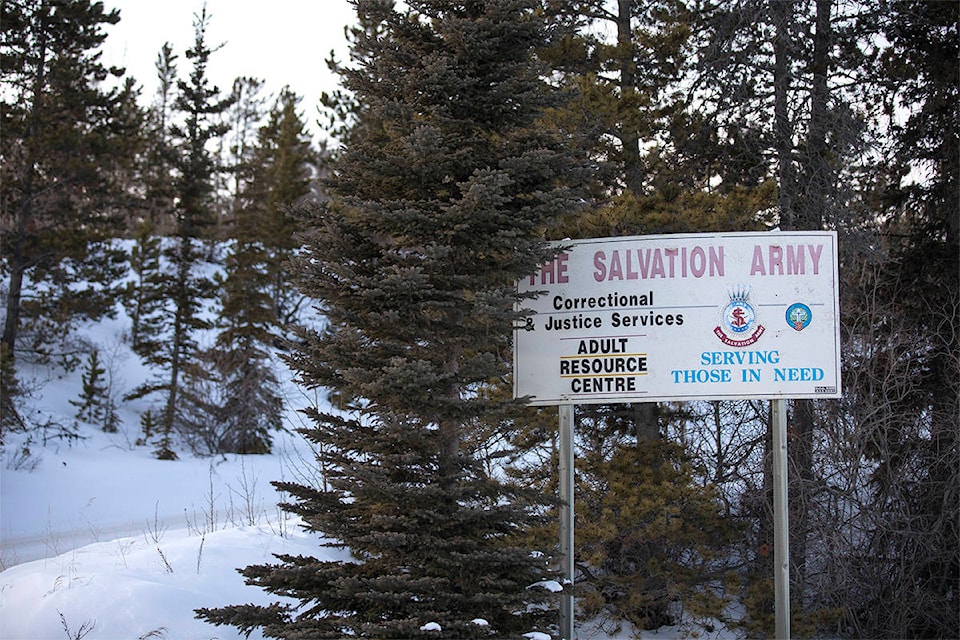The Yukon’s only halfway house will soon be located in a retrofitted unit of the Whitehorse Correctional Centre with a justice-focused NGO to take over programming, if the government approves a recent proposal.
In a joint interview April 15, the Yukon’s director of corrections Andrea Monteiro and the John Howard Society of British Columbia’s executive officer Mark Miller said they’re hopeful cabinet will green-light their plan to replace the Salvation Army-run Yukon Adult Resource Centre (ARC).
The ARC, located just off the Alaska Highway between Two Mile Hill and the Whitehorse airport, is the only transitional, supervised housing facility in the Yukon, housing men who are newly released from jail, on bail or who otherwise require supervision but are not in custody. (There’s no halfway home for women in the Yukon.)
It’s set to close on April 30 — an extension from March 31 — with the land to be sold to the Yukon government and swallowed into a plan to expand the Alaska Highway.
“We are feverishly working away at making sure that the facility can be open on May 1 so that there is no break in service,” Monteiro said.
“We both, John Howard as well as Yukon government, are concerned about the men that are currently at the Salvation Army and we want to make sure that they have a safe place to go.”
(In an email April 14, Al Hoeft, a regional spokesperson for the Salvation Army, said there are currently eight residents at the ARC — seven in-house and one self-isolating at home — and that seven or eight will be transitioning to the new location.)
It’s the first time officials have publicly spoken about plans to replace the ARC since the News first reported in February about the facility’ impending closure.
Unit E of the Whitehorse Correctional Centre (WCC), a three-tiered building that’s behind the jail’s main structure, is tentatively set to become the ARC’s physical replacement.
Monteiro said renovations and upgrades are already underway to “normalize” the 40-bed unit — the ARC had a capacity of only 18 beds — and make it seem less like another part of the jail, including “bringing in furniture, fixtures and equipment that is not maximum security-grade.”
The changes will also extend beyond the unit’s physical aspects; Monteiro said the government will be looking to make legislative amendments so that Unit E will no longer be designated as a part of the WCC.
That will help reinforce “the fact that this is not just another unit of the correctional centre, it is in fact its own designated program and space and is not part of the correctional centre itself,” she said.
Meanwhile, the John Howard Society, a national nonprofit that offers services aimed at helping people involved in the justice system reintegrate back into the community, is set to take over programming, should the proposal be approved.
Monteiro said discussions with the society, which has more than 60 locations across Canada but is new to the Yukon, have been happening for about a month and things have come together “quickly.”
Miller said John Howard currently has one staff member in the Yukon currently undergoing a mandatory isolation period so that they’ll be “ready to go” at the end of the month.
The details of the programming to be offered at the new facility are still being worked out, but Miller said the society is experienced in “providing full service to communities and individuals,” including “providing basic levels of supervision,” assistance with finding housing and employment, and substance abuse and domestic violence supports.
Both he and Monteiro said they didn’t have concerns about the facility being so close to the jail — in fact, both said they saw it as an advantage.
“There will be questions about that for sure, I think, but I personally believe it’s something that will work, you know, extremely well,” Miller said.
“We currently work in correctional facilities in British Columbia where we have reintegration workers and perhaps we have residential facilities that are based, you know, quite a distance from the correctional facilities and that takes extra work, extra coordination, extra staffing services … it makes it difficult at times to connect to the services in specific communities.”
The proposed Yukon model, he said, will ensure that corrections and John Howard staff, as well as other NGOs in the community and Indigenous leaders, can work collaboratively and cohesively on transitioning someone back into the community.
Monteiro agreed, saying that having the WCC and the halfway house located on the same complex would allow for a better integration of programs and services between the two facilities.
“This really is an innovative partnership, all the way down from the location to a new NGO in the territory,” she said. “I’m very excited about the direction that corrections and the Department of Justice is going in here in the territory.”
Contact Jackie Hong at jackie.hong@yukon-news.com
